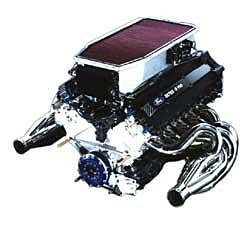Oil viscosity at 200º C should be around 1 cSt, same viscosity your friend claims F1 oil has. At 130 º it should be around 2. That's not the way you classify the oil: if you measure its viscosity following SAE (the W numbers we all are familiar with), you specify viscosity at 100º. For example:
Code: Select all
SAE Viscosity (cP)* Viscosity mm2/s (cSt)
Viscosity at Temperature at 100o C
Grade (oC), Max
--------------------------------------------------------------------------
Cranking Pumpability Min Max
0W 3250 at —30 30,000 at —35 3.8 —
5W 3500 at —25 30,000 at— 30 3.8 —
10W 3500 at —20 30,000 at —25 4.1 —
15W 3500 at —15 30,000 at —20 5.6 -
20W 4500 at —10 30,000 at —15 5.6 -
25W 6000 at —5 30,000 at —10 9.3 -
20 — — 5.6 9.3
30 — — 9.3 12.5
40 — — 12.5 16.3
50 — — 16.3 21.9
60 — — 21.9 26.1
To answer your question, take a look (check the black curve, that I think it's similar to what you should expect of an F1 oil):

I have to mention that a typical working temperature for the rotating parts of the engine is 80-100 º, so that's the temperature you should use for design of bearings. As mentioned, you wish to have an oil that diminishes its viscosity for the influence it has as an "atmosphere" where the moving parts in the sump reside. On the other hand, for bearing design, it does not matter if viscosity is different in places where the oil is not "being used".
Cosworth ZETEC-R, models JD, VJ and VJM, used by Jaguar and Minardi, have similar specifications: 10 cilynders, 72 degrees, 120 kg, 2998 cc, 15800 to 16500 rpm, 720-730 bhp.




